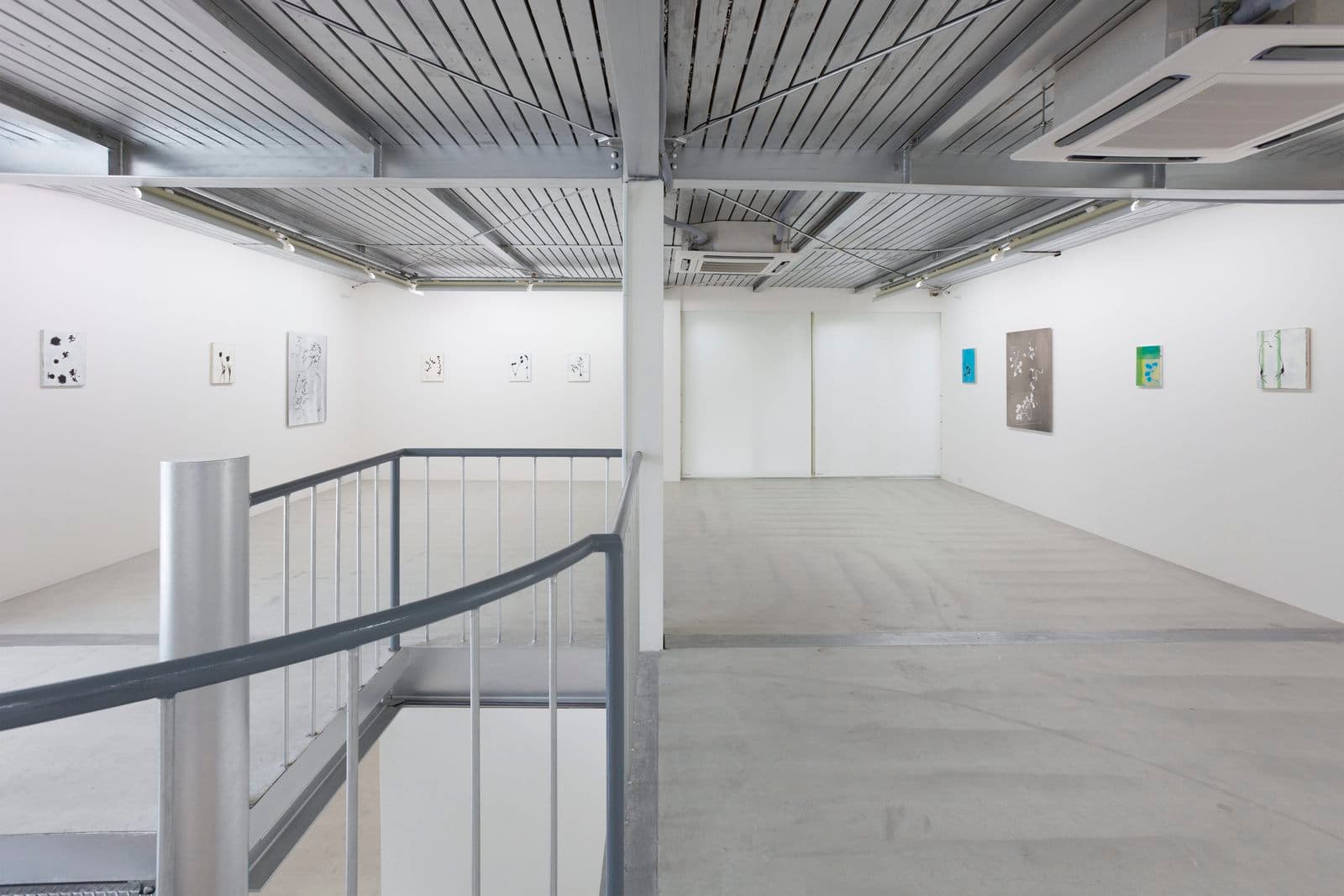
Sugiura Kunié
2015.11.07–12.20
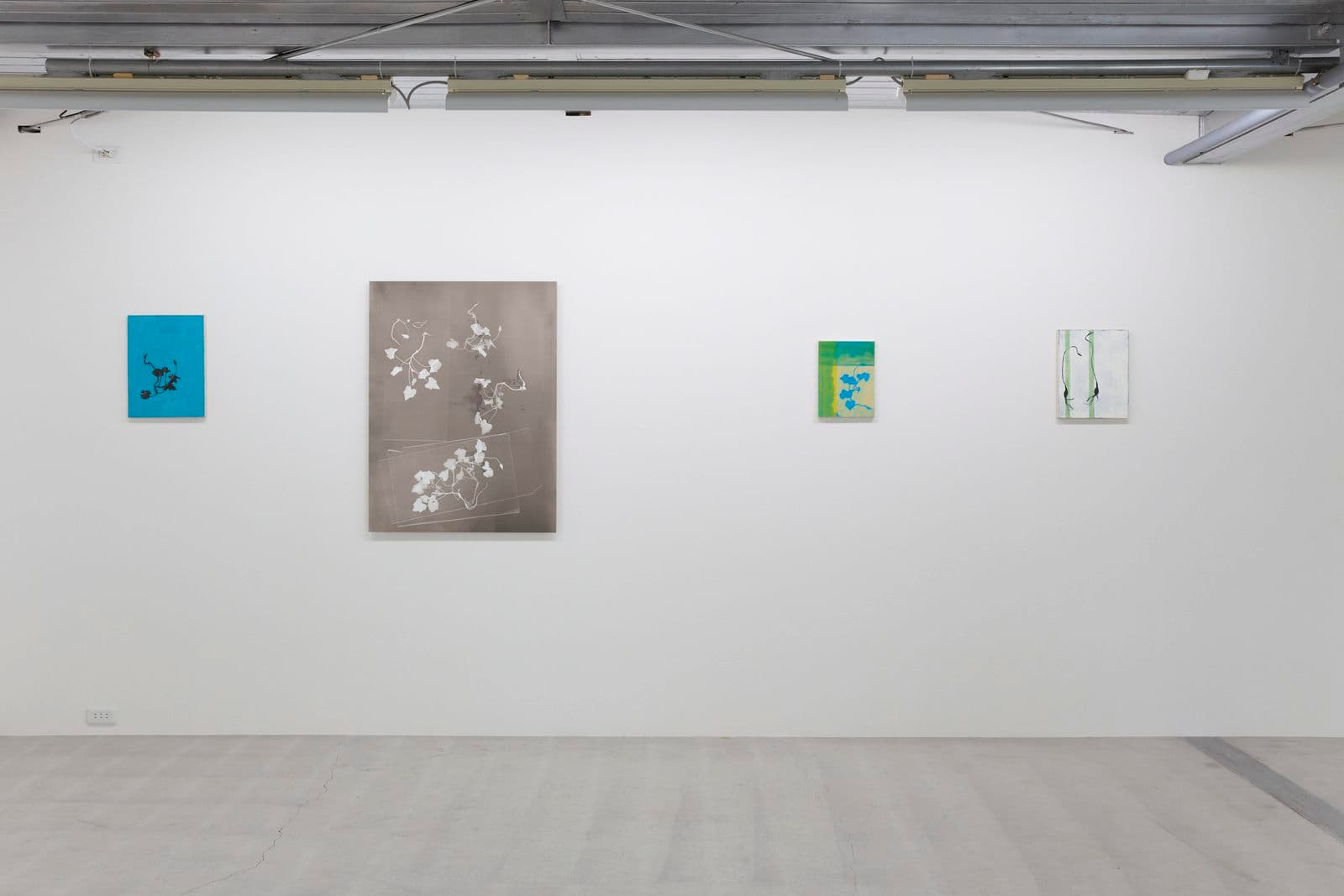
Sugiura Kunié
2015.11.07–12.20
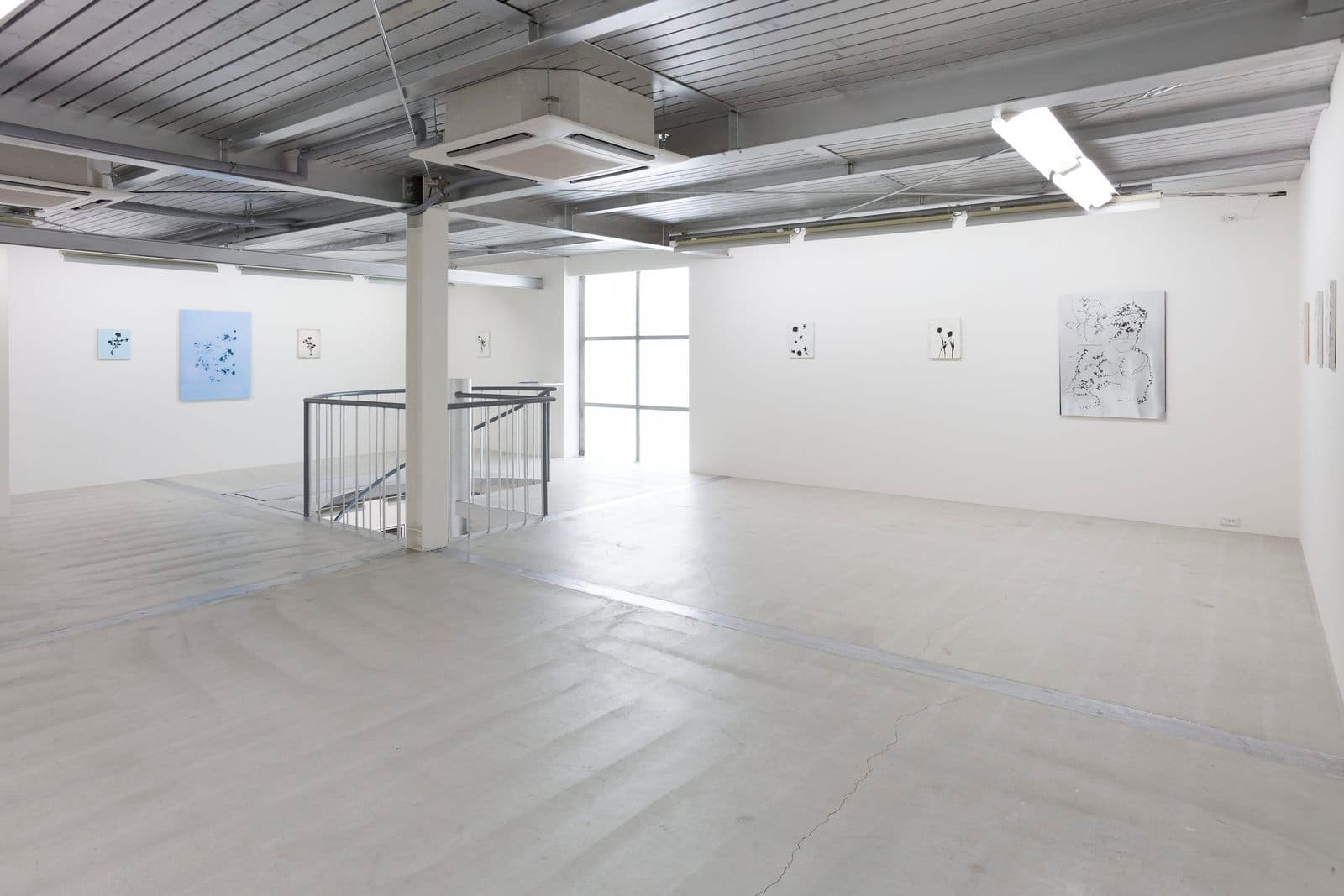
Sugiura Kunié
2015.11.07–12.20
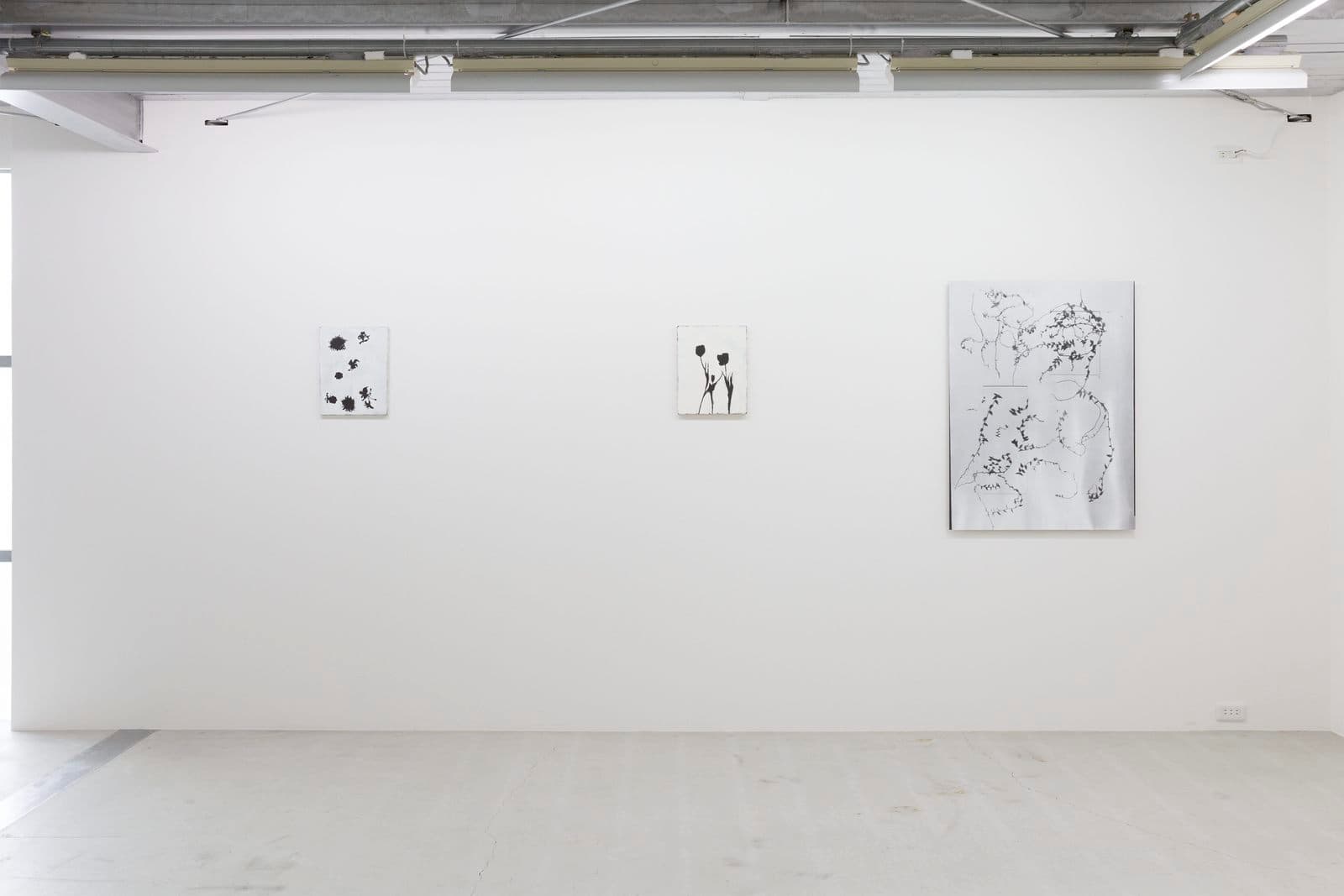
Sugiura Kunié
2015.11.07–12.20
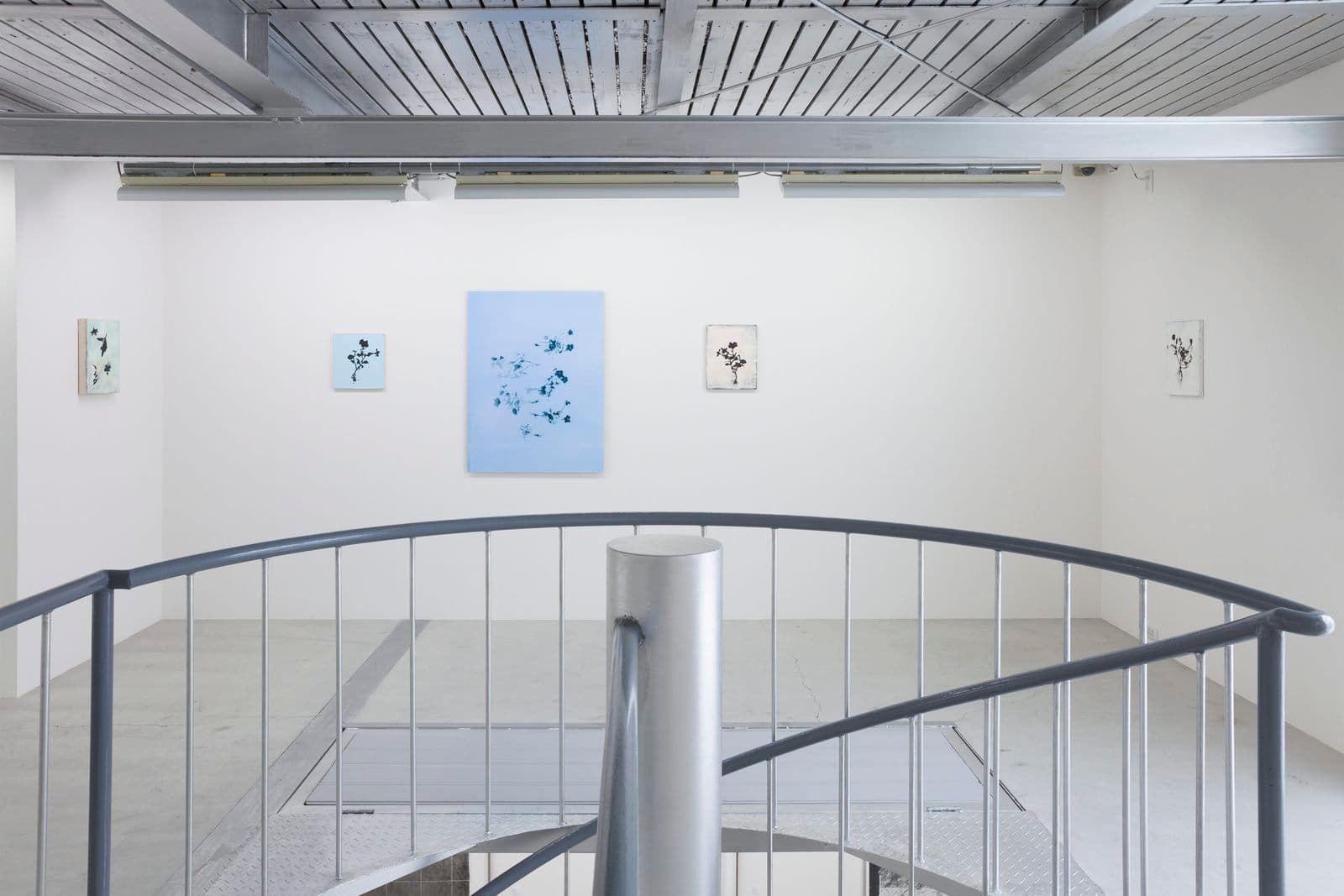
Sugiura Kunié
2015.11.07–12.20
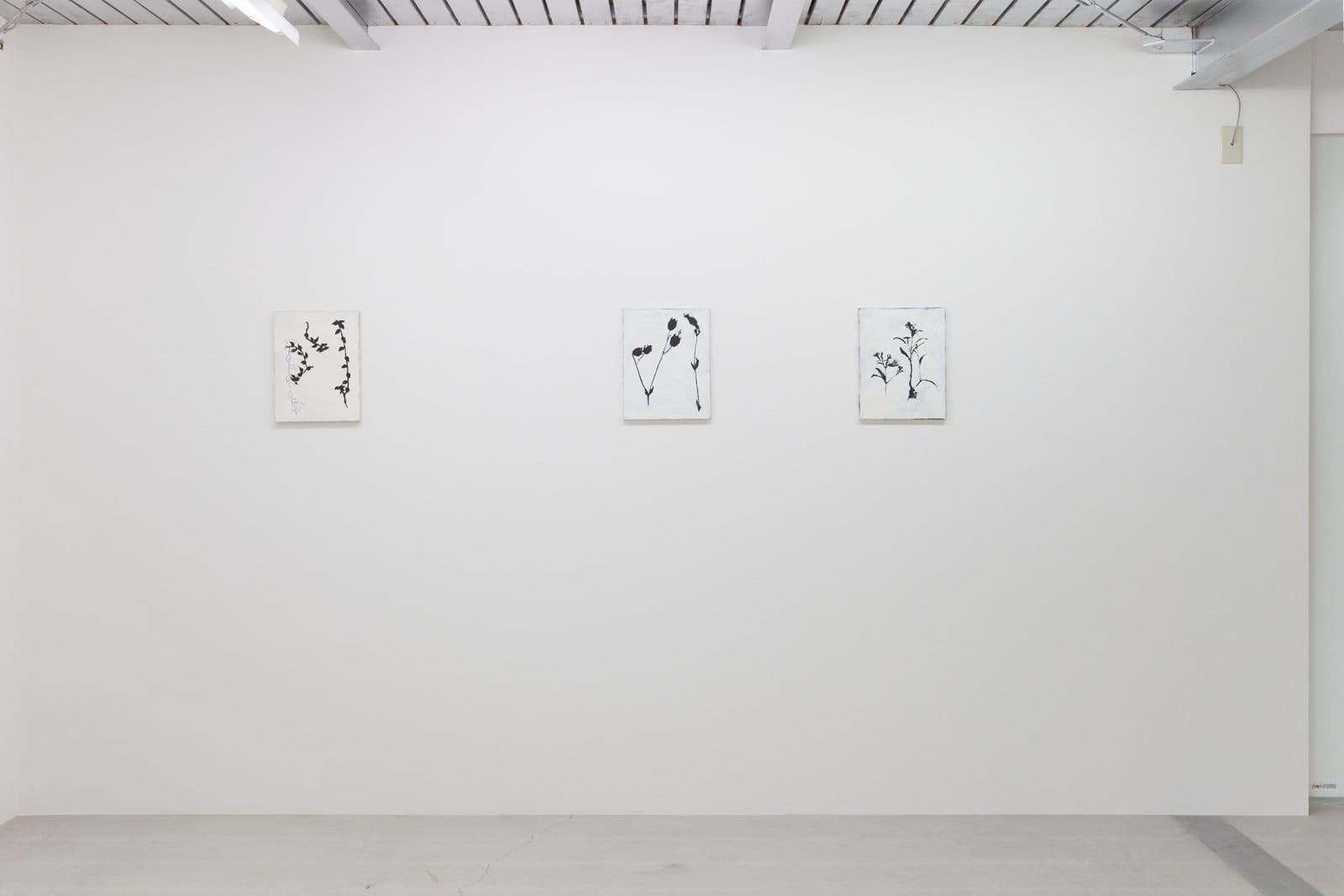
Sugiura Kunié
2015.11.07–12.20
Solo Exhibition
We are closed on Monday, Tuesday and National holidays (11/23)
Opening Party(with artist): November 7th, 16:00–18:00
Sugiura Kunié was born in Nagoya, Japan. Following graduation from The Art Institute of Chicago in 1967, she moved to New York, where she is still based. She has been working with photographs, especially after the 1980’s, producing photograms - a technique that puts subjects directly onto sensitized paper and exposes them to light - using plants, animals, and human beings, including famous artists and scientists. Her works show the static beauty or energetic dynamism of lives.
Kamakura Gallery has held exhibitions of Sugiura’s works five times since 1993. This 6th exhibition, titled “Botanic after Anna Atkins” is a reference to Anna Atkins (1799–1871) a British botanist who made many photograms of plants or seaweed. Sugiura first encountered Atkins’s photograms while working on a series of plant photograms entitled “Botanicas series,” “Cut Flowers series,” “Stacks series” and so on. She was inspired by Atkins’s works with their various kinds of plants and graceful and beautiful impressions. In 1991 Sugiura began making a new series named “Pressed Specimens,” putting a small glass plate on small plants (or without glass) and exposing them to light. More than a decade later, in 2004, she developed new works from “Pressed Specimens” by tracing plant shapes through the use of latex on black painted canvas, painting the whole surface white or blue. When the latex was removed, the black shape of the plants appeared. Describing this, Sugiura said that “It’s different from a simple sketch or painting of plants? it’s like a way of communing with plants.”
In this exhibition, three photograms from the “Pressed Specimens” series and 14 oil or acrylic painted works derived from the series will be on display, providing an opportunity to encounter her experimental approach and works.
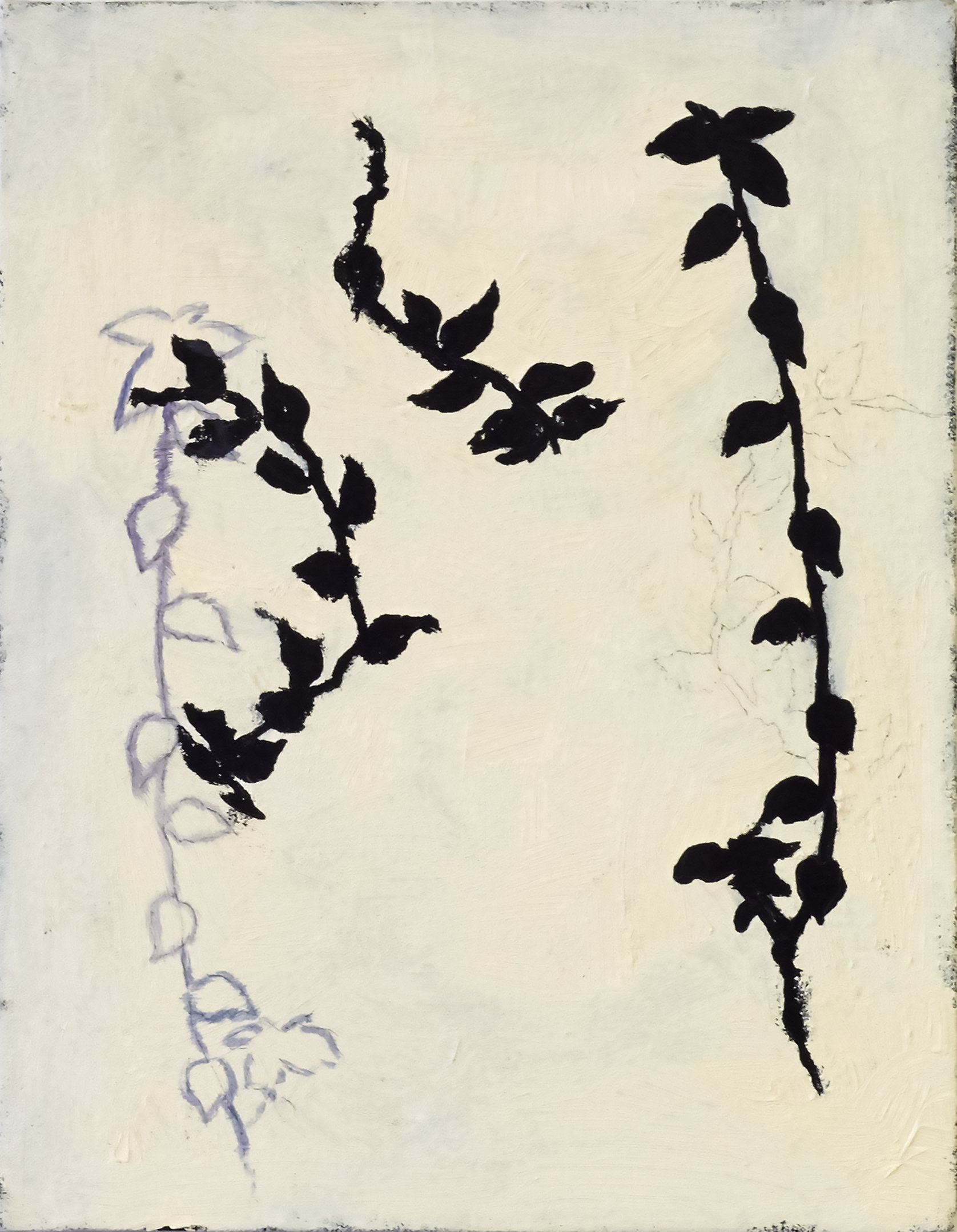
Simple, small and clear -- one can gaze into it and perhaps ignore it at another time -- one can be inspired and led to something hidden. These flower paintings sprung from this very interest.
We may assume (as a principle) that photography (photographing) is objective and that painting (rendering) is subjective. Usually an artist chooses either approach, but I choose a method that ties the two together, makes them parallel or combines them. When in school I was taught the kitsch imitate surface style, but encouraged to practice real artists use of new process to break into original territories. And so I find the possibility of a new vision in experiments with unconventional techniques. My adaptation of photography and painting may also illuminate the double structures of my identity as a Japanese individual living in the West.
When we argue about the beginnings of life we usually think about animals. But plants originated at the same time or even earlier than animals and then evolved. For example often trees and bushes were depicted coexisting with dinosaurs. In Japanese culture trees and flowers are considered significant subject matter, and particularly cherry blossoms. The most enthusiastic and early admirers of my flower photograms were Japanese.
When I started working with photograms of flowers I tried not to be overwhelmed by their surface beauty alone. Rather I emphasizes their structure and function. Flowers are reproductive organs and depend for pollination on the bees , birds and some times wind. Since the 1980s my Botanicus series (1989), Cut flowers series(1990s), and Stacks series (1990s) were made in sequence with living animal series.
My Pressed Specimens series were also made by laying down plants and flowers or sometimes pressing them under glass. I painted small canvases completely in black, then added contours of flowers in latex rubber, painted the surface in a different color and pulled the latex of the flowers to reveal them in silhouette. To present both photographs and paintings side by side in this exhibition, I would like to compare flowers captured in objective or subjective documentation with similarities and discrepancies in mind.
Sugiura Kunié
When I was studying photography during the 1960s, neither the name of Anna nor her images were mentioned in history. It was after more than twenty years that I encountered her seaweed blue prints. Besides the beauty of these images, there are more than 400 works of diverse character. I noticed her radical spirit. She combined ancient and contemporary methods. She collected seaweeds as a hobbyist, but documented them with the most advanced technology of Cyanotype.
Anna Atkins (1799–1871) was a fortunate pioneer, who learned photogram from William Henry Fox Talbot, a friend of her father. In addition, she happened to be a close friend of Sir John Herschel, who invented the Cyanotype Photographic Process. But her images also show the astute research abilities of a scientist and a rich artistic imagination in her blue prints of plants and seaweed. Her handmade book of ‘British Algae: Cyanotype Impressions’ (1843) preceded of ‘The Pencil of Nature’ (1844) by Fox Talbot.
Because she worked in the Victorian era her works could be overlooked as serious photographic experiments. But we must recognize her contribution and radical originality even as late as the twenty-first century.
Sugiura Kunié
休廊: 月曜・火曜・祝日(11/23)
オープニングパーティー(作家が来日します)11月7日(土) 16:00–18:00
杉浦邦恵は1960年代にシカゴ美術学校で学んだのち、写真作品を中心にニューヨークで活動を続け、80年代からは被写体を直接印画紙に感光させて影やかたちを写し取るフォトグラムの手法で多くの作品を制作してきました。動植物から美術家や科学者を含む人間まで移ろいゆく生命体の瞬間の静的な美しさや動的な激しさを捉えながら、時に抽象絵画のようにも感じられる作風のものや鮮烈なカラー写真までその表現は多岐に渡り、国内外の美術館・画廊で継続的に発表されています。鎌倉画廊で6回目となる今回の個展では、イギリスの植物学者であり、植物のフォトグラムでも知られるアンナ・アトキンスにちなんで「Botanic after Anna Atkins」と題し、植物を用いた90年代初頭のフォトグラムと、それらを元に10数年を経て独自の手法でキャンバスに描かれた作品群を展示致します。
杉浦がフォトグラムに取り組み始めた頃のある日、スタジオに友人が花を持ってきた時から作家は植物や花の持つ神秘的な魅力に取り付かれました。「気にしていなかった花を題材にして作ったとき、その輪郭が新鮮で、生き生きしていると思った。自然界の要素、生物であり、両性を備えた性器でもあり、その交接は鳥や蜂に頼るという自然界の深い神秘を持っていることも。」と回想し、その後、ボタニカスシリーズ、カットフラワーズ、スタックスシリーズと植物のフォトグラムを作り続ける中で、作家はアンナ・アトキンスのフォトグラムと出会いました。「その種類の多さと、飾り気のない優雅さで忘れられない印象を残す」アトキンスの仕事に大きなインスピレーションを受けた杉浦は、1991年に小さな植物をそのまま、またはガラス板で押さえて感光させた 「Pressed Specimens」 というフォトグラムのシリーズを制作しました。そして、「2004年になって、黒く塗ったキャンバスに、それらの(植物の)輪郭をラテックス(ゴム)でかたどり、乾いた時に周りを白等で塗ってゴムを引き離すと、下に黒いかたちがあらわれた。植物を写生したのとは違う、植物に親しもうというような、かたちを得るプロセスとでもいおうか----」というキャンバス作品が生み出されました。
今展では、「Pressed Specimens」からフォトグラム3点を、そしてそのシリーズから派生したキャンバス作品14点を出展致します。作家を捉えて離さない植物の、時にシンプルに、時に複雑に感じられる優美なかたち、独自の手法で取り組んだ実験的で生命感あふれる作品を是非ご高覧下さい。
* Anna Atkins (アンナ・アトキンス 1799–1871)はイギリスの植物学者で、植物や海藻などをフォトグラムを用いて記録した写真家としても知られる。写真技術の先駆者の一人ウィリアム・ヘンリー・フォックス・タルボットに学び、フォトジェニック・ドローイング等で数多くの植物写真を残した。
Simple で、小さくて、明快がよい――ずっと眺め入ることも出来、無視するときもあり――それらから触発され、表面にない隠れたものも暗示されるから。今回展示の小さな花の絵は、そういう興味から出てきたようだ。
写真(撮る)は客観的、絵(描く)は主観的と仮定できよう(原則として)。普通アーティストは、そのどちらかの製法を選ぶらしいが、私は両方を結びつけたり並列したりして、混合の製法を選んできた。学生の時、キッチュはスタイルをまねるが、前衛はプロセスを通じて新しい領域に進むと教えられた。新しい視覚の可能性を、従来にない新しい実験をすることに感じたからだ。写真と絵を併用することは、写真だけでは十分に自分の表現にできないもどかしさをゼロから始める絵で補充しようと求めた結果のようだ。日本人でありながら、西洋で学び、住んでいるというアイデンティティーからでてきた二重構造なのかもしれない。
地球に生命が現れた頃に論争が行く場合も、普通は動物を考えるが、植物も同じように現れ、進化してきたのだろう。恐竜のそばに木や茂みがよく描かれているように。日本の文化にとって、木、花、特に桜は重要な位置を占めると言える。わたしの花のフォトグラムにすぐ反応したのも、日本の鑑賞者であった。
フォトグラムを始めて、花を主題にした時に、花の美しさに流され表面的に扱うのでなく、花の本質は種子を生み、配分するという目的に気がついた。花は両性を備えた性器でもあり、交接を鳥や昆虫、風などに頼るという深い神秘に惹かれて1980年代からフォトグラムの中で Botanicus、Cut Flowers、Stacks のシリーズが出てきた。その一部として、Pressed Specimens シリーズ(1991)は、根もふくめた花や植物をそのまま、時にはガラスで押さえることで出てきた。2004~2006年に制作した小さな絵は、黒く塗ったキャンバスに、植物の輪郭をゴムのラテックスで型取り、乾いた時に周りを一色に塗りつぶしたのち、ゴムをはがして出てくるシルエットである。その過程で、植物への知識と理解を集められる思い がしたからだ。
今回、フォトグラムと絵を集めることで、花という主題を使って現れた外形の記録と心象の記録の相似と相違について提示してみたい。
アナ・アトキンス(Anna Atkins 1799-1871)は、1960年代に私が 写真を学んだ時にはイメージを見たこともなかったし、名前を聞いたこともなかった。その後20年ぐらい経ってから、彼女の海藻のブループリントを見た。その美しさもさることながら、400枚ぐらいのイメージは彼女が押し花のような古くからある採集法を、ブループリントというその時代に発明された写真技術と結びつけていたことに並々ならぬ‘閃めき’(radical spirit)を感じた。
アトキンスは写真の親と言われるフォックス・タルボット(William Henry Fox Talbot)が彼女の父の友人であったので、直接フォトグラムを習ったし、ブループリント(Cyanotype Photographic Process)の発明者ジョン・ハーシエル卿(Sir John Hirschel)は親友だったので、写真の初期に出くわした幸運なパイオニアではあった。しかし、彼女のブループリントは科学者としての鋭い観察力と芸術的想像力を備えている。また、手製であったとはいえ、写真のイメージを最初に本にしたのは、タルボットの「自然の鉛筆(The Pencil of Nature)」(1844)に先んじている。
ヴィクトリア時代において女性ということで業績が見過ごされたことに、1世紀半が過ぎたが彼女の貢献を告げずにはいられない。
名古屋市生まれ。1967年 School of The Art Institute of Chicago 卒業。その後ニューヨークへ移り、現在ニューヨーク在住。1969年 ポートガロ・ギャラリー(ニューヨーク)で初個展。1979年よりツァイト・フォト・サロン(東京)で個展を開催しその後同画廊で継続的に発表。1998年愛知県美術館にて個展「杉浦邦恵展―惹きつけるもの」開催。その他、ムラヌシ・レダーマン・プロダクションズ(ニューヨーク)、イル・テンポ(東京)、アキラ・イケダ・ギャラリー(ニューヨーク)、レスリー・トンコノウ・アートワークス+プロジェクト(ニューヨーク)、ジュディ・アン・ゴールドマン・ギャラリー(ボストン)等で個展。鎌倉画廊ではこれまで1993年、95年、97年、01年、07年に個展を開催。グループ展では、東京都写真美術館、埼玉県立近代美術館、板橋区立美術館、川崎市市民ミュージアム、東京藝術大学大学美術館、ホイットニー美術館、ニューヨーク近代美術館、ベルリン現代美術センター、デンヴァー美術館等で出展。パブリックコレクションとして、東京国立近代美術館、栃木県立美術館、北九州市立美術館、埼玉県立近代美術館、東京都写真美術館、愛知県美術館、ニューヨーク近代美術館、デンヴァー美術館、ボストン美術館等に収蔵されている。